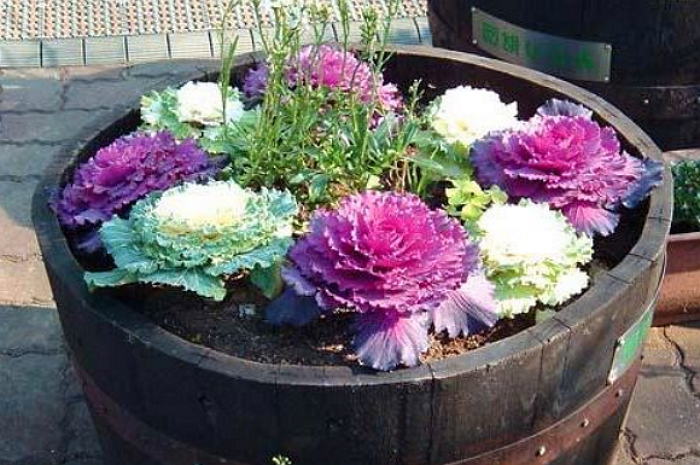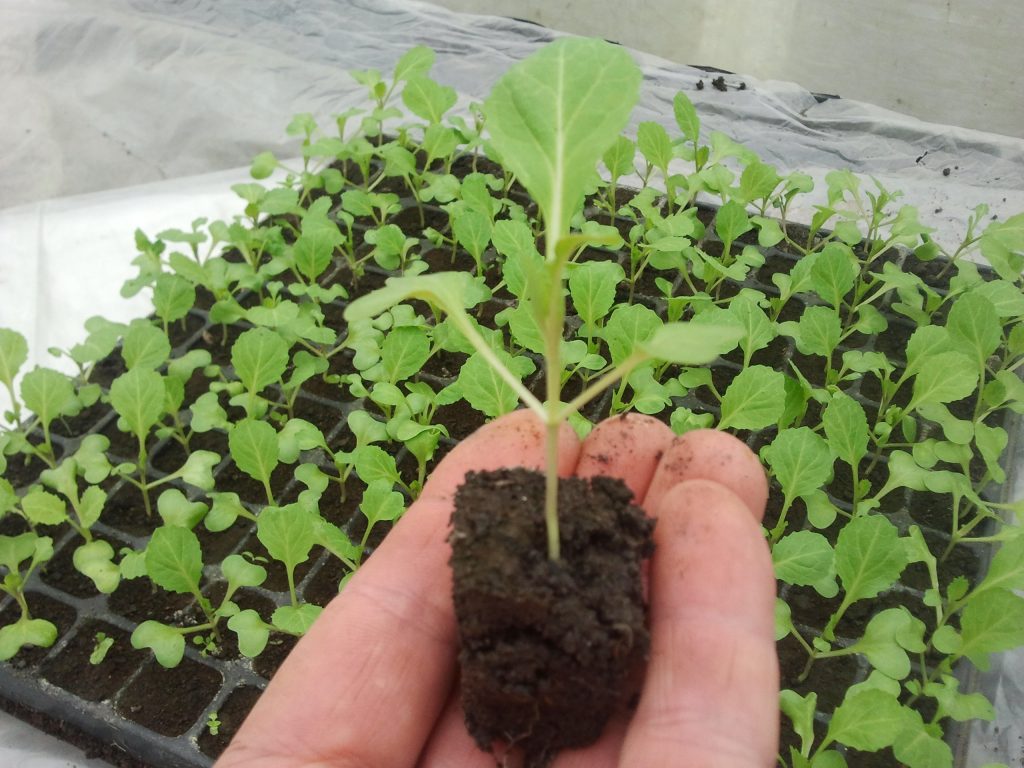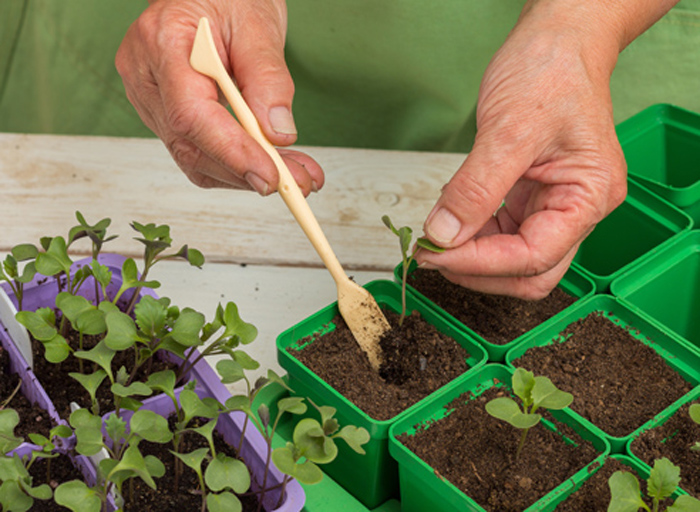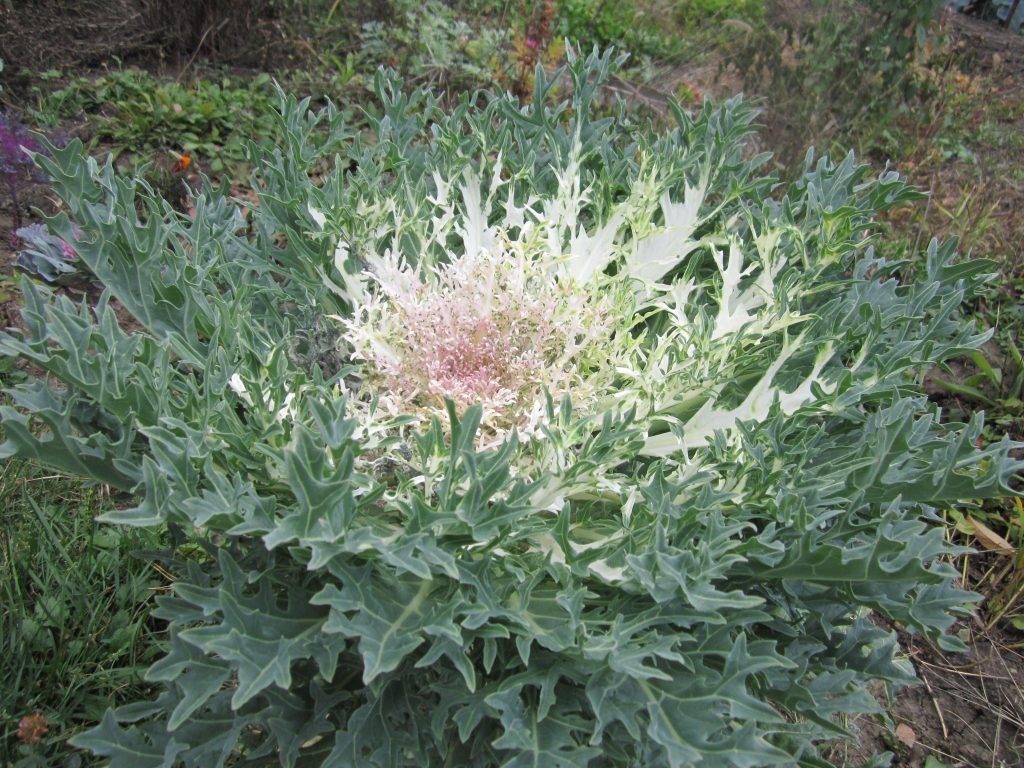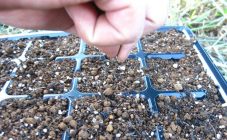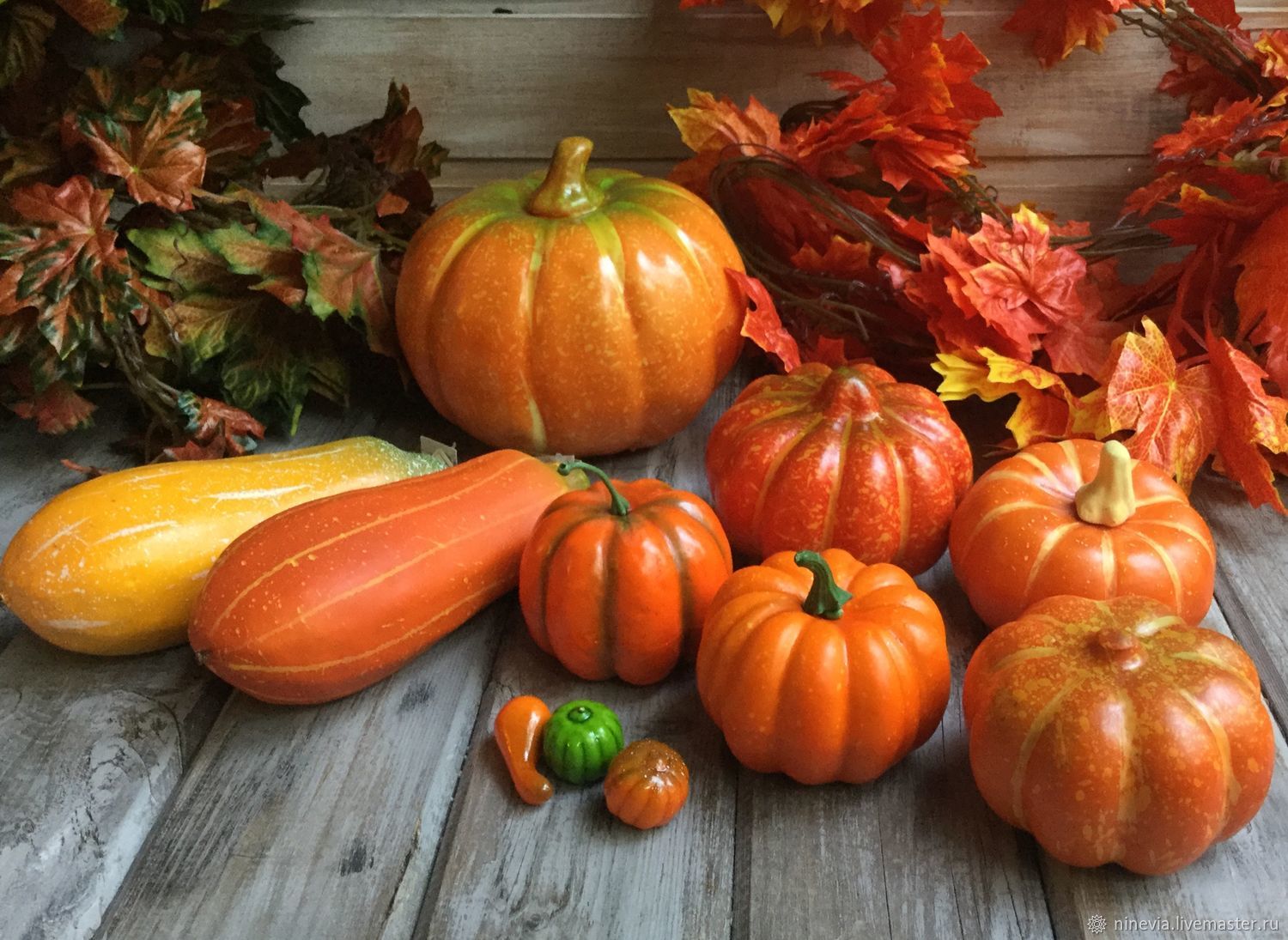Content:
Ornamental cabbage is a decorative element that has become popular in our country relatively recently. For a long time, gardeners preferred practicality to beauty and planted ordinary white cabbage or cauliflower. The popularity of the decorative one is currently facilitated by the fact that there are many varieties, and cultivation does not require much effort, so every gardener can find a suitable option for himself. In addition, a young plant is not only intended to decorate the garden, it can be eaten.
Growing features
Despite its outward beauty, ornamental cabbage is surprisingly unpretentious. Growing it is an easy task even for novice gardeners. Although it is precisely because of the different planting methods that there is no single step-by-step instruction for cultivation.
Like almost any plant, ornamental cabbage can be grown from seeds or as seedlings. When planting, you need to monitor the acidity of the soil, since the plant will not survive in highly oxidized soil. In general, almost any land is suitable for planting, not only black soil, but also, for example, loamy or sandy loam.
Since ornamental cabbage in care is not much different from ordinary white cabbage, it loves water in the same way and, accordingly, requires regular watering. During the cultivation of seedlings, instead of irrigation, the plant is abundantly sprayed, and watered only when the ground is completely dry. After planting in the ground (or after the appearance of several leaves), the vegetable is literally poured into a large amount of water once a week, with the exception of periods of extreme heat. Then watering is carried out daily.
Ornamental cabbage needs light. While in the shade, it will certainly grow, but it can stretch disproportionately, changing its shape.
Growing ornamental cabbage from seeds
One way to grow a particular ornamental variety is to sow the seeds outdoors. However, in order for all flowers to sprout, it is worth adhering to certain rules.
- Since young plants are vulnerable to cold temperatures, make sure the warm weather settles down and there is no severe frost before planting seed. That is why the most suitable months to plant seeds are from mid-May to mid-June.
- Since the plant tolerates transplanting well from place to place, you can combine growing from seeds with getting seedlings. Sometimes seedlings begin to grow not at home, but directly in the open field.
- Before sowing seeds, the soil is fertilized with organic and mineral fertilizers. Ash is used to reduce the acidity of the soil.
Before planting seeds, the soil must be loosened and fertilized, and holes are made. Humus is poured into each groove.Seeds are laid to a depth of 1.5-2 cm. After planting, the site can be covered with a film, creating a greenhouse effect. After the appearance of the first leaves, the film is removed.
However, any other covering material can be used in place of film, including inverted boxes or plastic cups. After removing the covering material, cabbage is watered every 2-3 days, in hot weather - daily.
The density of the arrangement of seedlings also depends on whether a temporary or permanent place is chosen for planting. For further transplantation, the seeds are placed at a distance of 5-7 cm from each other. If changes in the location of the culture on the site are not planned, then the distance between them can be increased to 15-20 cm.
Since the cultivation of any plants requires timely picking, it will be possible to do without it when growing an ornamental vegetable in open ground only if the plants were initially located at a great distance from each other.
In the case of an ornamental crop, picking is usually done when transplanting from place to place. Ornamental cabbage can be repotted up to 3 times if the roots are not left bare. Then she takes root well in a new place.
Ornamental cabbage: growing from seedlings
At home, as a rule, they use containers in which several seeds are sown at once, or small cups.
Since seedlings are usually transplanted at the age of 1 month, they are planted in early to mid-April, depending on climatic conditions.
To obtain seedlings you will need:
- universal soil;
- a mixture of soil and ash;
- sand and turf soil in a 1: 1 ratio.
Before planting, the containers are watered abundantly, and later they are only sprayed from a spray bottle as the earth dries up.
The culture requires a lot of light to grow. After the seeds have germinated - usually it takes 1 week - the containers are moved to a cool place. If sunlight is not enough for growth, it is replaced with special lamps.
After the appearance of 2 cotyledonous leaves, the plants can be planted in separate containers. At the same time, during transplantation, the holes are significantly deepened so that 1.5-2 cm from the stem with leaves remain on the surface.
Peacock Tail variety
One of the most beautiful varieties is Peacock's Tail cabbage. There are 2 varieties of it, differing in color:
- green carved leaves with a white core;
- dark crimson carved leaves with a dark pink core.
The average plant height is 25-30 cm. Like most varieties, it is frost-resistant, easily tolerates frost. As a rule, it is planted in the form of seedlings in mid - late May. The seedlings themselves are sown in early April. The average seed germination time is 5-7 days.
The culture requires regular abundant watering and a lot of sunlight, so the flower bed should be set up in a place open to sunlight.
The recommended distance between adult plants is 35-40 cm.
Further care
In order for ornamental cabbage to truly decorate the garden, it is worth remembering a few simple rules:
- Like white cabbage, decorative cabbage loves the sun, which means that it requires a lot of light to grow.
- After transplanting into open ground, the plant is watered every 2-3 days. It is enough to spray very young bushes from a sprayer.
- Due to the fact that the plant, as a rule, has large inflorescences, it needs regular hilling for stability. The procedure is carried out 2-3 times a season.
- The plant is fed with complex fertilizers 2-3 times per season.
- Cabbage tolerates frost well, but it should not be left to winter outdoors. To preserve the culture for another year, at the end of the season it is dug up and transplanted into a pot, which is brought home for the winter.
- Plants in pots or pots are watered and fed 2 times more often, because they lack nutrients.
If you follow these tips, ornamental cabbage will delight the eye for a long time on the site and at home in a pot in winter. She will not only decorate the space, but also give delicious unusual fruits.
